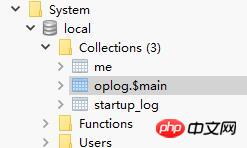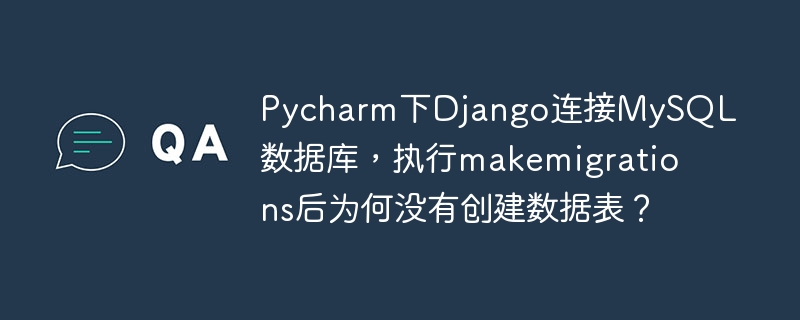mongodb 的replication是通过一个日志来存储写操作的,这个日志就叫做oplog,而下面这篇文章主要给大家介绍了利用mongodb中oplog机制实现准实时数据的操作监控的相关资料,需要的朋友可以参考借鉴,下面来一起看看吧。
前言
最近有一个需求是要实时获取到新插入到MongoDB的数据,而插入程序本身已经有一套处理逻辑,所以不方便直接在插入程序里写相关程序,传统的数据库大多自带这种触发器机制,但是Mongo没有相关的函数可以用(也可能我了解的太少了,求纠正),当然还有一点是需要python实现,于是收集整理了一个相应的实现方法。
一、引子
首先可以想到,这种需求其实很像数据库的主从备份机制,从数据库之所以能够同步主库是因为存在某些指标来做控制,我们知道MongoDB虽然没有现成触发器,但是它能够实现主从备份,所以我们就从它的主从备份机制入手。
二、OPLOG
首先,需要以master模式来打开mongod守护,命令行使用–master,或者触发器增加master键为true。
此时,我们可以在Mongo的系统库local里见到新增的collection——oplog,此时oplog.$main里就会存储进oplog信息,如果此时还有充当从数据库的Mongo存在,就会还有一些slaves的信息,由于我们这里并不是主从同步,所以不存在这些集合。

再来看看oplog结构:
"ts" : Timestamp(6417682881216249, 1), 时间戳 "h" : NumberLong(0), 长度 "v" : 2, "op" : "n", 操作类型 "ns" : "", 操作的库和集合 "o2" : "_id" update条件 "o" : {} 操作值,即document
这里需要知道op的几种属性:
insert,'i' update, 'u' remove(delete), 'd' cmd, 'c' noop, 'n' 空操作
从上面的信息可以看出,我们只要不断读取到ts来做对比,然后根据op即可判断当前出现的是什么操作,相当于使用程序实现了一个从数据库的接收端。
三、CODE
在Github上找到了别人的实现方式,不过它的函数库太老旧,所以在他的基础上进行修改。
Github地址:github.com/RedBeard0531/mongo-oplog-watcher
mongo_oplog_watcher.py如下:
#!/usr/bin/python import pymongo import re import time from pprint import pprint # pretty printer from pymongo.errors import AutoReconnect class OplogWatcher(object): def init(self, db=None, collection=None, poll_time=1.0, connection=None, start_now=True): if collection is not None: if db is None: raise ValueError('must specify db if you specify a collection') self._ns_filter = db + '.' + collection elif db is not None: self._ns_filter = re.compile(r'^%s.' % db) else: self._ns_filter = None self.poll_time = poll_time self.connection = connection or pymongo.Connection() if start_now: self.start() @staticmethod def get_id(op): id = None o2 = op.get('o2') if o2 is not None: id = o2.get('_id') if id is None: id = op['o'].get('_id') return id def start(self): oplog = self.connection.local['oplog.$main'] ts = oplog.find().sort('$natural', -1)[0]['ts'] while True: if self._ns_filter is None: filter = {} else: filter = {'ns': self._ns_filter} filter['ts'] = {'$gt': ts} try: cursor = oplog.find(filter, tailable=True) while True: for op in cursor: ts = op['ts'] id = self.get_id(op) self.all_with_noop(ns=op['ns'], ts=ts, op=op['op'], id=id, raw=op) time.sleep(self.poll_time) if not cursor.alive: break except AutoReconnect: time.sleep(self.poll_time) def all_with_noop(self, ns, ts, op, id, raw): if op == 'n': self.noop(ts=ts) else: self.all(ns=ns, ts=ts, op=op, id=id, raw=raw) def all(self, ns, ts, op, id, raw): if op == 'i': self.insert(ns=ns, ts=ts, id=id, obj=raw['o'], raw=raw) elif op == 'u': self.update(ns=ns, ts=ts, id=id, mod=raw['o'], raw=raw) elif op == 'd': self.delete(ns=ns, ts=ts, id=id, raw=raw) elif op == 'c': self.command(ns=ns, ts=ts, cmd=raw['o'], raw=raw) elif op == 'db': self.db_declare(ns=ns, ts=ts, raw=raw) def noop(self, ts): pass def insert(self, ns, ts, id, obj, raw, **kw): pass def update(self, ns, ts, id, mod, raw, **kw): pass def delete(self, ns, ts, id, raw, **kw): pass def command(self, ns, ts, cmd, raw, **kw): pass def db_declare(self, ns, ts, **kw): pass class OplogPrinter(OplogWatcher): def all(self, **kw): pprint (kw) print #newline if name == 'main': OplogPrinter()
首先是实现一个数据库的初始化,设定一个延迟时间(准实时):
self.poll_time = poll_time self.connection = connection or pymongo.MongoClient()
主要的函数是start() ,实现一个时间的比对并进行相应字段的处理:
def start(self): oplog = self.connection.local['oplog.$main'] #读取之前提到的库 ts = oplog.find().sort('$natural', -1)[0]['ts'] #获取一个时间边际 while True: if self._ns_filter is None: filter = {} else: filter = {'ns': self._ns_filter} filter['ts'] = {'$gt': ts} try: cursor = oplog.find(filter) #对此时间之后的进行处理 while True: for op in cursor: ts = op['ts'] id = self.get_id(op) self.all_with_noop(ns=op['ns'], ts=ts, op=op['op'], id=id, raw=op) #可以指定处理插入监控,更新监控或者删除监控等 time.sleep(self.poll_time) if not cursor.alive: break except AutoReconnect: time.sleep(self.poll_time)
循环这个start函数,在all_with_noop这里就可以编写相应的监控处理逻辑。
这样就可以实现一个简易的准实时Mongo触发器监控器,下一步就可以配合其他操作来对新入库的程序进行相应处理。


















